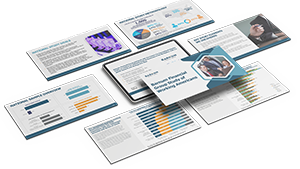
You may be counting on funds from a defined benefit plan to help you achieve a comfortable retirement. Often referred to as traditional pension plans, defined benefit plans promise to pay you a specified amount at retirement.
To help you understand the role a defined benefit plan might play in your retirement savings strategy, here’s a look at some basic plan attributes. But since every employer’s plan is a little different, you’ll need to read the summary plan description, or SPD, provided by your company to find out the details of your own plan.
What are defined benefit plans?
Defined benefit plans are qualified employer-sponsored retirement plans. Like other qualified plans, they offer tax incentives both to employers and to participating employees. For example, your employer can generally deduct contributions made to the plan. And you generally won’t owe tax on those contributions until you begin receiving distributions from the plan (usually during retirement). However, these tax incentives come with strings attached–all qualified plans, including defined benefit plans, must comply with a complex set of rules under the Employee Retirement Income Security Act of 1974 (ERISA) and the Internal Revenue Code.
How do defined benefit plans work?
A defined benefit plan guarantees you a certain benefit when you retire. How much you receive generally depends on factors such as your salary, age, and years of service with the company.
Each year, pension actuaries calculate the future benefits that are projected to be paid from the plan, and ultimately determine what amount, if any, needs to be contributed to the plan to fund that projected benefit payout. Employers are normally the only contributors to the plan. But defined benefit plans can require that employees contribute to the plan, although it’s uncommon.
You may have to work for a specific number of years before you have a permanent right to any retirement benefit under a plan. This is generally referred to as “vesting.” If you leave your job before you fully vest in an employer’s defined benefit plan, you won’t get full retirement benefits from the plan.
How are retirement benefits calculated?
Retirement benefits under a defined benefit plan are based on a formula. This formula can provide for a set dollar amount for each year you work for the employer, or it can provide for a specified percentage of earnings. Many plans calculate an employee’s retirement benefit by averaging the employee’s earnings during the last few years of employment (or, alternatively, averaging an employee’s earnings for his or her entire career), taking a specified percentage of the average, and then multiplying it by the employee’s number of years of service.
Note: Many defined benefit pension plan formulas also reduce pension benefits by a percentage of the amount of Social Security benefits you can expect to receive.
How will retirement benefits be paid?
Many defined benefit plans allow you to choose how you want your benefits to be paid. Payment options commonly offered include:
- A single life annuity: You receive a fixed monthly benefit until you die; after you die, no further payments are made to your survivors.
- A qualified joint and survivor annuity: You receive a fixed monthly benefit until you die; after you die, your surviving spouse will continue to receive benefits (in an amount equal to at least 50 percent of your benefit) until his or her death.
- A lump-sum payment: You receive the entire value of your plan in a lump sum; no further payments will be made to you or your survivors.
Choosing the right payment option is important, because the option you choose can affect the amount of benefit you ultimately receive. You’ll want to consider all of your options carefully and compare the benefit payment amounts under each option. Because so much may hinge on this decision, you may want to discuss your options with a financial advisor.
What are some advantages offered by defined benefit plans?
- Defined benefit plans can be a major source of retirement income. They’re generally designed to replace a certain percentage (e.g., 70 percent) of your preretirement income when combined with Social Security.
- Benefits do not hinge on the performance of underlying investments, so you know ahead of time how much you can expect to receive at retirement.
- Most benefits are insured up to a certain annual maximum by the federal government through the Pension Benefit Guaranty Corporation (PBGC).
How do defined benefit plans differ from defined contribution plans?
Though it’s easy to do, don’t confuse a defined benefit plan with another type of qualified retirement plan, the defined contribution plan (e.g., 401(k) plan, profit-sharing plan). As the name implies, a defined benefit plan focuses on the ultimate benefits paid out. Your employer promises to pay you a certain amount at retirement and is responsible for making sure that there are enough funds in the plan to eventually pay out this amount, even if plan investments don’t perform well.
In contrast, defined contribution plans focus primarily on current contributions made to the plan. Your plan specifies the contribution amount you’re entitled to each year (contributions made by either you or your employer), but your employer is not obligated to pay you a specified amount at retirement. Instead, the amount you receive at retirement will depend on the investments you choose and how those investments perform.
Some employers offer hybrid plans. Hybrid plans include defined benefit plans that have many of the characteristics of defined contribution plans. One of the most popular forms of a hybrid plan is the cash balance plan.
What are cash balance plans?
Cash balance plans are defined benefit plans that in many ways resemble defined contribution plans. Like defined benefit plans, they are obligated to pay you a specified amount at retirement and are insured by the federal government. But they also offer one of the most familiar features of a defined contribution plan: Retirement funds accumulate in an individual account (in this case, a hypothetical account).
This allows you to easily track how much retirement benefit you have accrued. And your benefit is portable. If you leave your employer, you can generally opt to receive a lump-sum distribution of your vested account balance. These funds can be rolled over to an individual retirement account (IRA) or to your new employer’s retirement plan.
What you should do now
It’s never too early to start planning for retirement. Your pension income, along with Social Security, personal savings, and investment income, can help you realize your dream of living well in retirement.
Start by finding out how much you can expect to receive from your defined benefit plan when you retire. Your employer will send you this information every year. But read the fine print. Estimates often assume that you’ll retire at age 65 with a single life annuity. Your monthly benefit could end up being far less if you retire early or receive a joint and survivor annuity. Finally, remember that most defined benefit plans don’t offer cost-of-living adjustments, so benefits that seem generous now may be worth a lot less in the future when inflation takes its toll.
Here are some other things you can do to make the most of your defined benefit plan:
- Read the summary plan description. It provides details about your company’s pension plan and includes important information, such as vesting requirements and payment options. Address questions to your plan administrator if there’s anything you don’t understand.
- Review your account information, making sure you know what benefits you are entitled to. Do this periodically, checking your Social Security number, date of birth, and the compensation used to calculate your benefits, since these are common sources of error.
- Notify your plan administrator of any life changes that may affect your benefits (e.g., marriage, divorce, death of spouse).
- Keep track of the pension information for each company you’ve worked for. Make sure you have copies of pension plan statements that accurately reflect the amount of benefits you’re entitled to receive.
- Watch out for changes. Employers are allowed to change and even terminate pension plans, but you will receive ample notice. The key is, read all notices you receive.
- Assess the impact of changing jobs on your pension. Consider staying with one employer at least until you’re vested. Keep in mind that the longer you stay with one employer, the more you’re likely to receive at retirement.
IMPORTANT DISCLOSURES
This material was prepared by Broadridge Investor Communication Solutions, Inc. This information is believed to be from reliable sources; however, no representation is made as to its accuracy or completeness. This information does not constitute tax or legal advice and may not be relied on for the purpose of avoiding any Federal tax penalty, nor is it a solicitation or recommendation to purchase or sell any insurance or investment product or service, and readers should not rely upon it as such. Readers should seek such advice from their own tax or legal counsel or financial professional. Securities, investment advisory and financial planning services through qualified registered representatives of MML Investors Services, LLC. Member SIPC. 6 Corporate Drive, Shelton, CT 06484. Tel: 203-513-6000.



